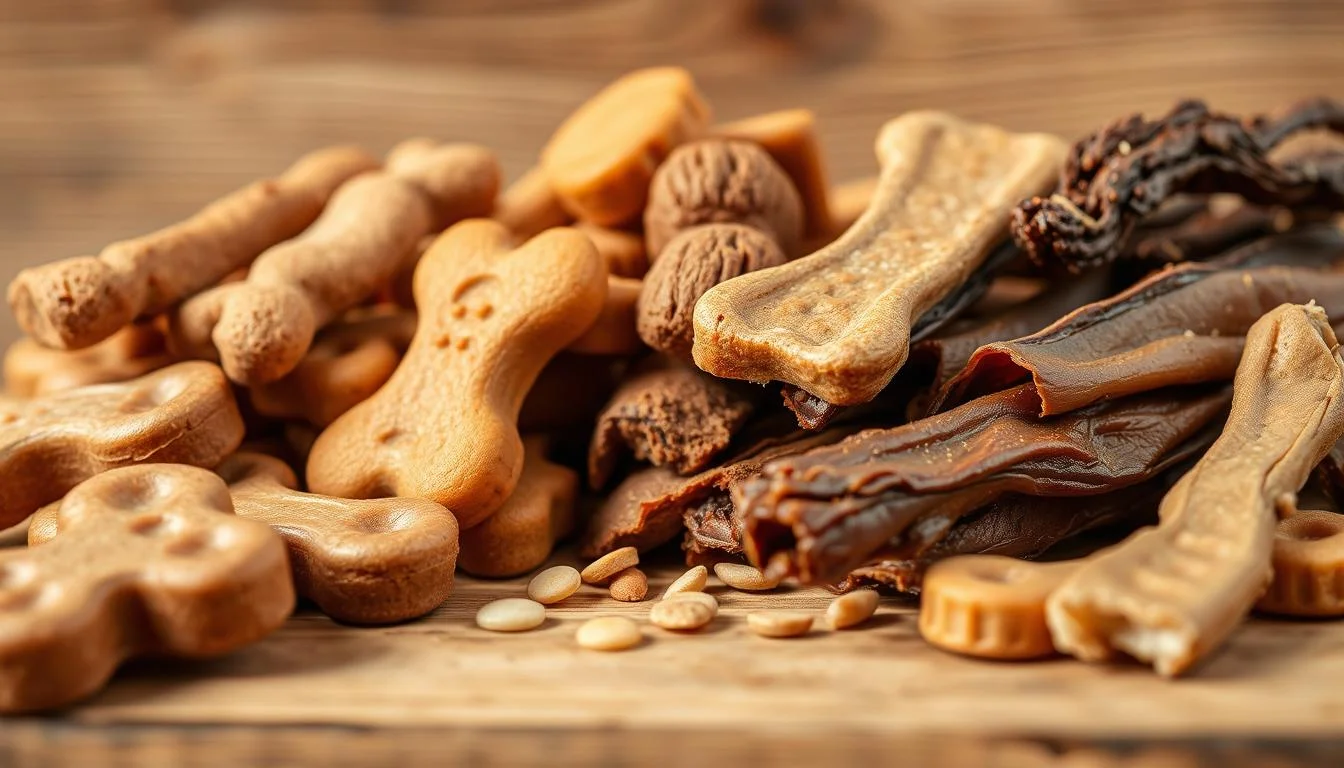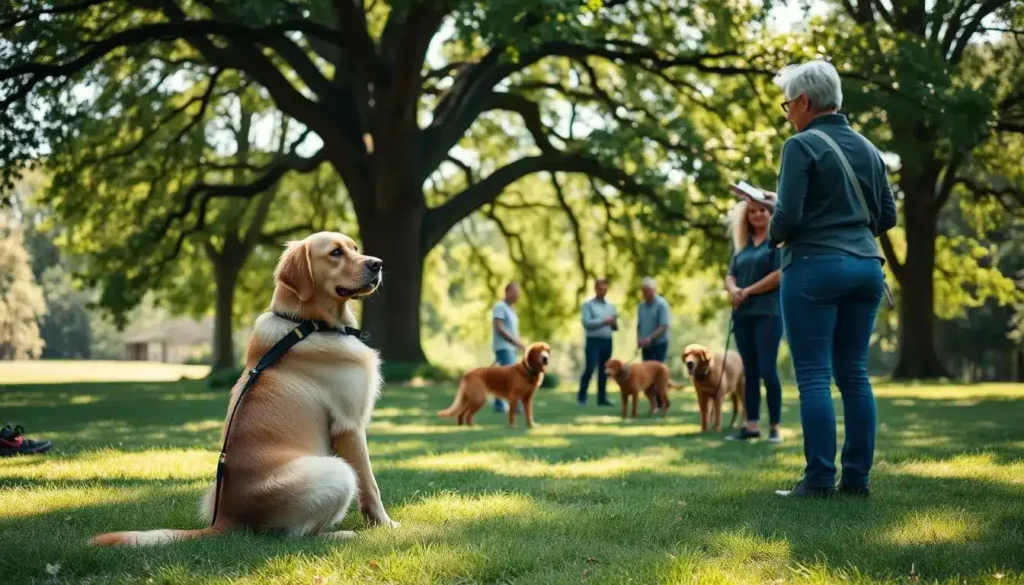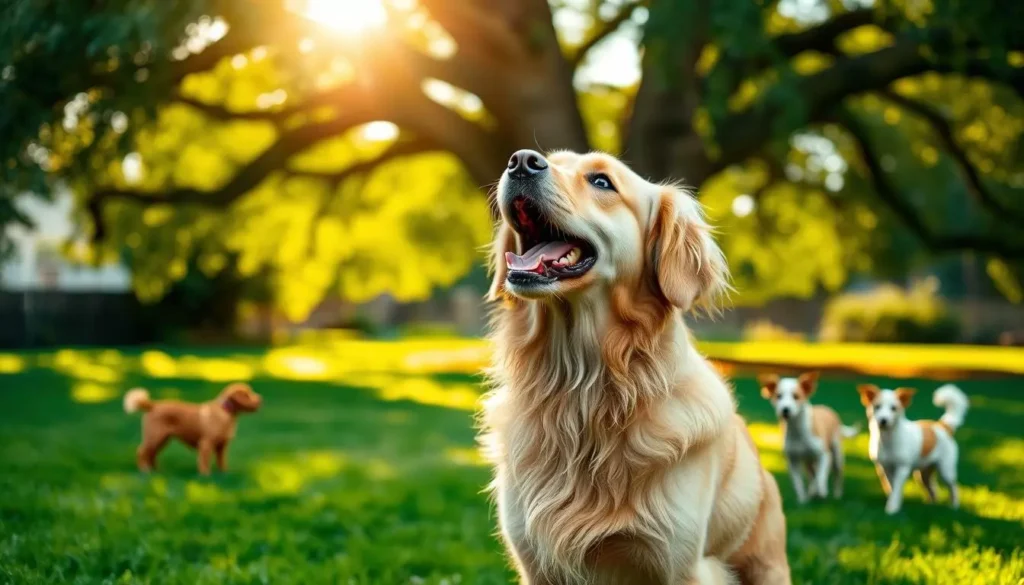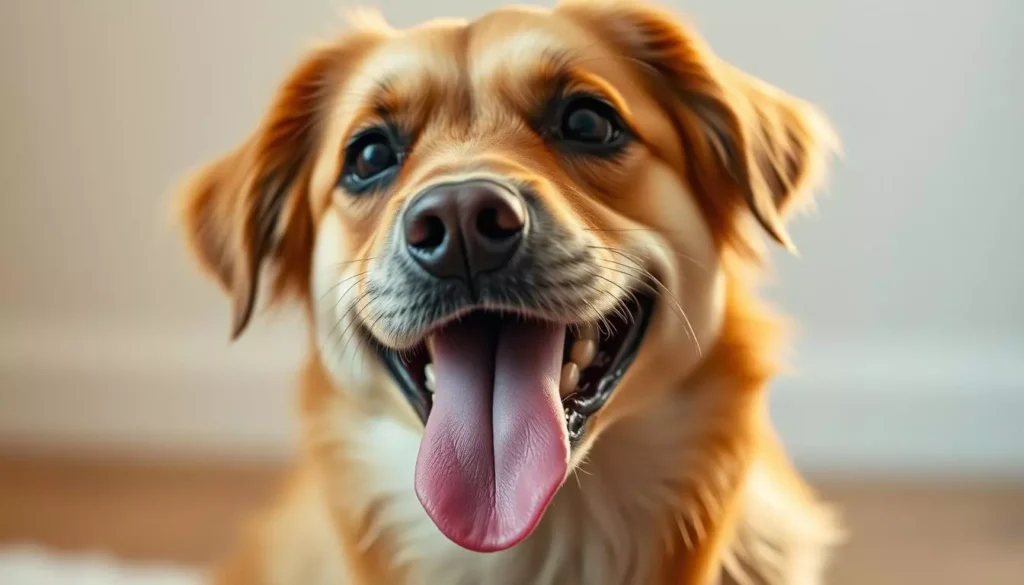I remember the first time I taught my dog to sit for a treat. Her tail wagged like crazy, and it felt pure. That small reward made training a conversation, not a fight.
Food rewards are key because they're easy to carry, quick, and let me give lots of feedback. This makes training sessions short and effective.
The best treat for dog training is one that makes learning fast. Tiny bites keep my dog focused without getting too full. Soft, stinky treats grab attention in busy spots.
I use training treats as my main tool because they're always ready. Toys and praise are great, but they're not always there when I need them.
When picking treats, think about your style and your dog's needs. Look for treats that are easy to eat, tasty, and healthy. The best rewards are quick, appealing, and fit into your dog's daily diet.
Key Takeaways
- Food rewards are the most convenient and consistent tool for shaping behavior.
- Small, soft, and aromatic treats speed learning and keep sessions moving.
- Toys and play are useful but less portable and less reliable for new skills.
- Balance palatability with calories to protect your dog’s health.
- Choose treats that match training goals: fast rewards for repetition, high-value for distractions.
Why treats matter in dog training: benefits of food rewards
I use food rewards because they make learning quick and easy. Dog training treats help a pup connect a behavior to a good outcome fast. This connection speeds up learning and boosts confidence in short, focused sessions.
Tasty treats for dog training use dopamine to help learning. I give a high-value treat right after the right action. This creates a strong, repeatable connection. In busy places or with other dogs, the best rewards keep focus and help new skills stick faster.
Why timing and consistency are critical
Give a reward within a second or two to mark the action I want. Waiting too long can confuse the dog. I use lots of rewards while teaching, then reduce them as the behavior becomes reliable.
Calories and diet considerations to avoid overfeeding
Training needs many repetitions, so I choose small, low-calorie treats. I aim to keep treats under 10% of daily calories. When sessions are intense, I use part of a meal for training rations.
Characteristics of the best training treats for dogs
I pick treats that help me train fast and keep my dog focused. The best treats balance size, scent, and nutrition. This way, each reward boosts learning without making my dog too full.
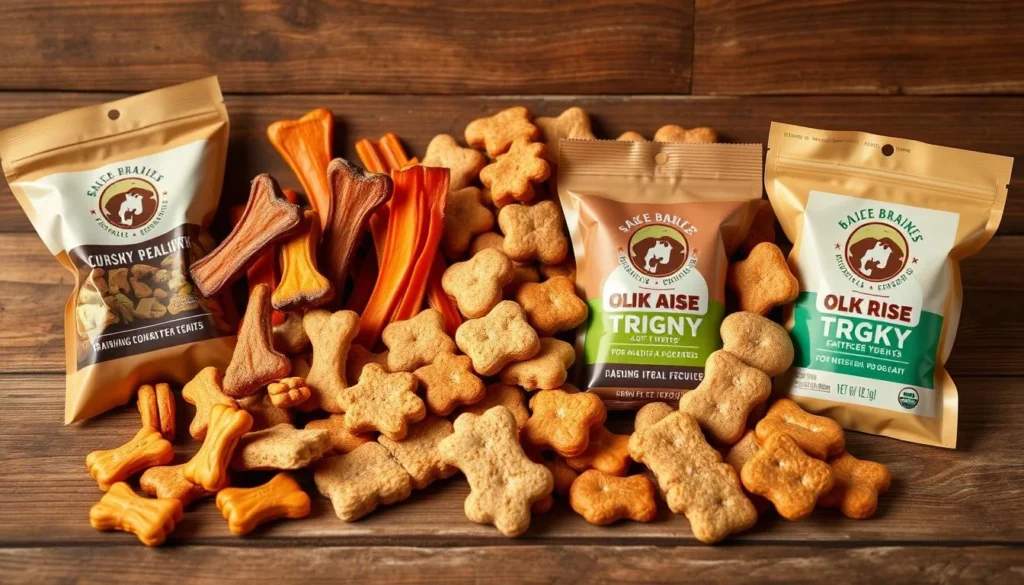
Size and ease of consumption for fast repetition
Small, pea-sized treats let me train many times without pause. They suit all dog sizes. Breaking larger treats into smaller pieces keeps training sessions quick and consistent.
Texture and scent: why soft, stinky treats work in distracting environments
Soft, moist treats disappear quickly. They're easier to eat than crunchy ones. For busy parks, I use stinky treats like cheese or cooked chicken to motivate my dog.
Ingredient quality and nutritional value for healthy dog treats
I choose treats with simple ingredients or natural flavors that match my dog's diet. Healthy treats with minimal fillers and no extra sugars are best. They also offer omega-3s or vitamins to enhance meals.
When I can, I prefer well-known brands and USA or grass-fed sources. This reduces the risk of contamination. Quality treats make each reward more valuable and safer for my dog.
Fast-eating treats to keep training sessions moving
I prefer quick, low-mess rewards for steady progress. Fast-eating treats help me reinforce small steps without stopping the flow. They keep the dog focused on the exercise and speed up learning in fast drills.
Here are some practical examples I use and when to use them.
Examples of quick treats I use
For basic reps, I use pea-sized kibble. For a commercial option, I choose Pet Botanics Mini Training Rewards or Zuke’s Mini Trainers. Tiny bits of freeze-dried liver and air-dried ZIWI Peak are great for dogs that need high appeal.
If a treat is large, I cut it into many small pieces before the session. Small size means fast consumption and faster repetition. This suits most puppy classes and focused obedience work.
When to use fast-eating treats during skill acquisition
I use these treats during initial learning and shaping because I need a high rate of reinforcement. Fast-eating treats are best in repetitive drills, shaping new behaviors, and puppy classes where quick delivery is key.
For recall or high-distraction scenarios, I might switch to higher-value, slower treats. But I start with rapid rewards to build the behavior reliably.
How small pieces protect your dog’s waistline during intense training
Small pieces drastically reduce calories per reward. I break larger treats into many pieces and substitute kibble from daily allowance. This keeps rewards within about 10% of daily calories.
This approach helps puppies, sporting dogs, and anyone doing intense short-term training avoid unwanted weight gain. It maintains a high reinforcement rate.
| Type of Treat | Typical Use | Calories per Piece (approx.) | Why I Recommend It |
|---|---|---|---|
| Pea-sized kibble | High-volume basics and warm-ups | 0.5–1 kcal | Very low calories, easy to portion from daily meal |
| Pet Botanics Mini Training Rewards | Puppy classes and everyday training | 1–2 kcal | Small, consistent size and trainers trust the brand |
| Zuke’s Mini Trainers | Focused practice and impulse control drills | 1–2 kcal | Low-calorie, soft texture for quick chewing |
| Freeze-dried liver bits | Situations needing higher drive | 2–3 kcal | Very enticing scent, breaks into tiny morsels easily |
| Air-dried ZIWI Peak | Short bursts of high-value reinforcement | 2–3 kcal | Rich flavor, minimal mess, premium protein source |
High-value and tasty treats for difficult situations
I save the strongest rewards for the hardest moments. When a park is full of dogs or a vet visit makes my dog uneasy, I reach for human food. I use shredded cooked chicken, small cubes of cheddar, or thin slices of deli turkey. These items are easy to portion, quick to eat, and carry the scent power that turns a distracted dog back toward me.
When to use human food
I use cheese, cooked chicken, cooked fish, or deli meat only for high-distraction proofing and emergency recall practice. These foods are calorie-dense and perishable. So, I reserve them for crowded parks, vet handling, grooming, or when I need a near-perfect response.
Using strong rewards for recall and behavior change
High-value treats help me get my dog's attention when lower-value rewards fail. If a dog is fixated on a squirrel or stressed during counter-conditioning, a juicy meat morsel or a bite of cheese can break that focus. It reinforces the desired behavior.
Balancing high-value with everyday rewards
I alternate low-calorie minis for high-repeat drills and bring out the high-value treats for proofing under pressure. I cut larger human-food pieces into many tiny bits to stretch calories further. When I use a lot of strong rewards in a session, I reduce the dog’s meal portion that day. This keeps overall calories in check.
Top commercial training treats I recommend
I always have a few reliable snacks ready for training. Choosing the right treats helps me reward dogs quickly and prevent them from getting too many calories. I save the best treats for the toughest lessons.
Pet Botanics Mini Training Rewards
These treats are small and tasty, making them perfect for quick rewards. The bacon flavor is a hit with many dogs. It keeps them motivated during training.
Zuke’s Mini Trainers
Zuke’s are great for low-calorie, chewy rewards. They come in many flavors and are easy to carry. They're perfect for puppy training or when you need to reward dogs often.
ZIWI Peak air-dried options
ZIWI Peak treats are high-value and low-mess. They're packed with nutrients and can be part of a dog's diet. They're great for recall training.
I mix low-calorie treats with high-value ones. This combination works for simple tasks and important moments. Keep treats in a small pouch to reward dogs quickly and keep training sessions moving.
Using your dog’s regular food as training treats
I use my dog's regular kibble and canned food for training. It keeps the calories steady and makes it easy to stick to vet-prescribed diets. Swapping commercial treats for regular food is a smart move. It's healthy and saves money.
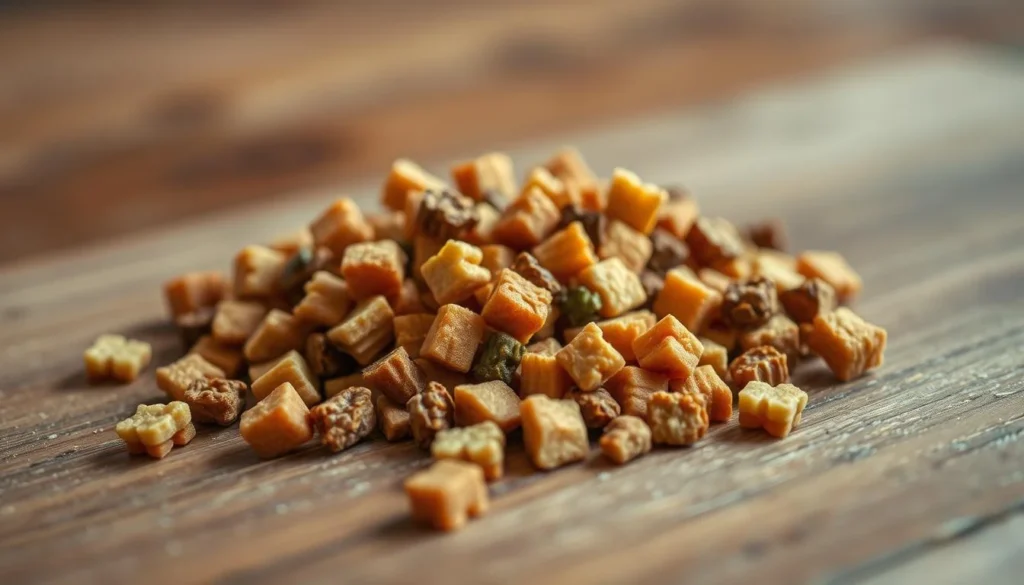
Watching my dog's weight is key when using meals as rewards. Counting these rewards as part of their daily calories helps manage weight. It also keeps dogs on special diets safe.
I make kibble exciting by changing its texture and smell. Soaking it in hot water or low-sodium chicken broth makes it soft and scented. For picky dogs, I use plain canned food or mash it into a squeeze tube. Baking canned food into crunchy bites adds variety.
Occasionally, I buy a small bag of a new-flavored kibble from brands like Blue Buffalo or Merrick. This makes training exciting without straying from their diet.
Portioning is crucial when using food for training. I break meals into tiny pieces for dozens of rewards without adding calories. When training increases, I reduce regular meal portions. This way, I keep rewards within their daily calorie needs.
I focus on nutrient balance and treat choice. For dogs with allergies or weight issues, using prescribed kibble as treats is best. For higher motivation, I mix a few small pieces of soft, low-calorie commercial treats with kibble. This creates high-value rewards without exceeding their calorie budget.
I plan each reward and adjust meals as needed. This keeps training consistent, supports weight goals, and makes every session practical. It uses dog training treats that fit real-life diets.
Long-lasting treats and enrichment for calm behavior
I use durable chews and interactive toys to keep dogs calm when I'm not around. Long-lasting treats help with crate anxiety, fill alone time, and stop chewing on furniture. I choose treats that fit my dog's size and chewing power to keep them safe and engaged.
Chewy treats and bully sticks
For crate training and quiet time, I choose bully sticks, braided bully chews, or long-lasting jerky. These chewy treats last longer than soft ones and help dogs settle down. I cut big chews for small breeds and replace them when they get too small.
Stuffable toys and frozen treats
Stuffing a Kong with unsweetened peanut butter, plain Greek yogurt, or mashed dog food and freezing it is a great idea. It gives a slow reward that soothes and entertains. I use it for training situations where calm is key, like separation or after exercise.
Safety and supervision recommendations
I always watch when dogs have long-lasting chews and treats. I avoid peanut butter with xylitol and choose the right chew size. If a chew breaks or a toy tears, I take it away right away to prevent choking.
I mix long-lasting treats with quick rewards during training. This keeps dogs motivated and relaxed when they need to focus.
How to pick healthy dog training treats: label reading tips
I read labels like I check a recipe before cooking. I look for single-protein options like freeze-dried liver or beef lung bites. These treats are healthier and better for training.
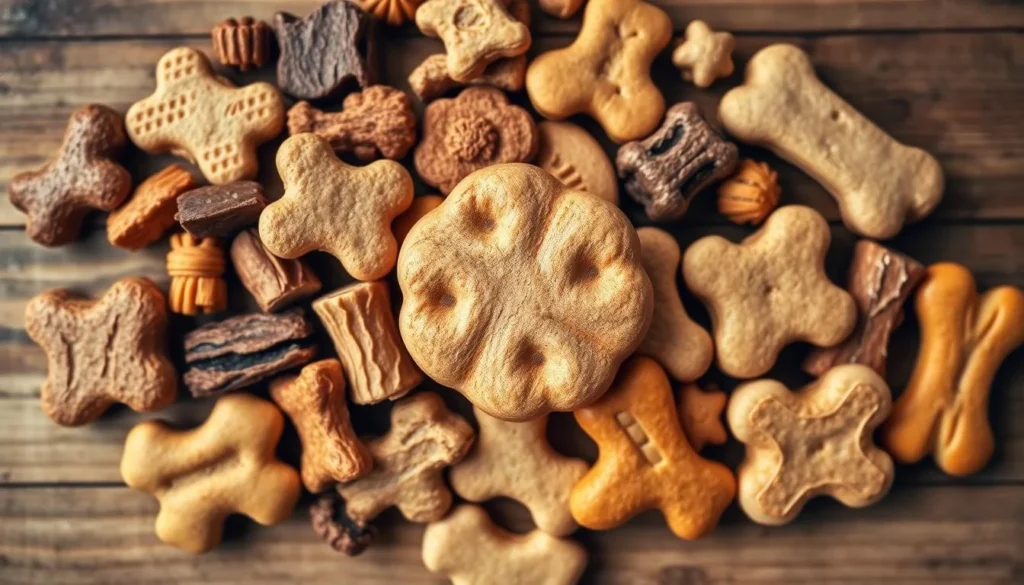
I choose treats with natural flavors, not artificial syrups or colors. This makes them appealing to picky dogs. I also look for soft treats that break easily, so I can reward my dog quickly.
What to avoid
I steer clear of treats with added sugars, propylene glycol, and preservatives like BHA or BHT. Treats with long ingredient lists or vague fillers are low quality. Good training treats should be nutritious, not just empty calories.
Why sourcing matters to me
I prefer treats made in the USA and from grass-fed beef. This ensures my dog is safe and gets healthier fats. Brands like K9 Connoisseur offer single-ingredient, grass-fed treats that meet my standards.
When picking treats, I start with small packs. I watch how my dog reacts and check the ingredients. If the treat keeps my dog excited and matches the label, it's a winner.
Practical training treat strategies I use
I keep training sessions short, fun, and predictable for my dogs. My focus is on timing, variety, and ending each session on a win. This keeps the dog eager for the next lesson. I use a mix of training treats for dogs to match the moment and the task.
High rate of reinforcement for new behaviors
When teaching a new cue, I reward almost every correct attempt. Small, fast rewards help the dog link action and outcome quickly. I favor tiny morsels that are easy to chew so repetition stays high without overfeeding.
I start with consistent rewards, then shift to variable schedules as the behavior becomes reliable. This helps the dog maintain the response even when treats are less frequent.
Changing up treats to prevent boredom and maintain enthusiasm
I rotate treat types within and between sessions. Mini commercial bites, freeze-dried meat, and a few pieces of kibble keep interest high. I sometimes add cooked chicken or cheese for tougher challenges.
Using several tasty treats for dog training in one session makes outcomes less predictable. The unpredictability keeps motivation high and reduces the chance of the dog tuning out a single reward type.
Ending sessions on a high note and combining treats with praise
If practice becomes frustrating, I finish on a simple, reliable cue like sit. I reward generously so the dog's last memory is positive. I pair treats with warm verbal praise and petting to build social reward value.
Over time, my dogs learn to work for both food and attention. This balance makes every training session effective and enjoyable.
| Situation | Recommended Treat Type | Why I Use It |
|---|---|---|
| New command learning | Pea-sized soft treats (e.g., Zuke’s Mini) | Fast consumption allows many repetitions without excess calories |
| High-distraction recall | Freeze-dried meat or small cooked chicken pieces | High value and strong scent grab attention in tough environments |
| Long sessions or weight control | Kibble or low-calorie minis (Pet Botanics Mini Training Rewards) | Lower calories let me reward more while safeguarding weight |
| Maintenance training | Mixed rotation of mini bites and occasional tasty human-food bits | Variety prevents habituation and keeps enthusiasm for practice |
Portion control and balancing treats with overall diet
I keep treat planning simple to keep training fun and dogs healthy. Treats motivate and reward, but they add calories. I use clear rules to prevent extra weight while keeping sessions effective.
I follow a practical guideline: treats, table scraps, and casual chews should total roughly 10% or less of a dog's daily calories. This prevents me from unintentionally pushing a dog into a calorie surplus. For example, a 30-pound dog eating 700 calories a day gets no more than about 70 calories in treats. This limit helps me choose portion control dog treats that still feel rewarding.
Breaking larger treats into many small pieces to reduce calories
When I use bigger or dense rewards like freeze-dried liver or air-dried bites, I crumble or slice them. One small piece gives the same motivation as a full chunk but with a fraction of the calories. This trick stretches high-value bites into dozens of mini rewards, so training stays fast without harming a dog’s waistline.
Adjusting meal portions when using training treats regularly
During intense training phases I cut meal portions slightly to offset extra treat calories. I only reduce meals when treats are nutritionally complete, such as ZIWI Peak or a balanced kibble used as rewards. That way I maintain overall nutrient balance and still offer healthy dog treats during practice.
For busy trainers, I recommend a mix of small, low-calorie snacks and a few high-value bits for tough lessons. This approach lets me use the best treat for dog training in every situation while keeping weight and nutrition in check.
best treat for dog training
I test treats with each dog to find what sparks fast focus. Some pups ignore kibble but will work for freeze-dried liver or small chicken bits. Finding the best treat for dog training starts with short trials and careful observation of effort and enthusiasm.
How to determine which treat is best for your dog’s preferences
I offer a small sample of options: plain kibble, Pet Botanics Mini Training Rewards, Zuke’s Mini Trainers, freeze-dried liver, and tiny cooked chicken pieces. I note which elicits an immediate, eager response.
I repeat each test in different settings. A treat that wins in a quiet room may fail in the park. I watch speed of consumption, willingness to trade focus, and how quickly the dog returns to work.
Matching treat type to training goal: fast reward vs. long-lasting calm
For rapid repetition and shaping new skills, I use pea-sized soft treats that dissolve quickly. They keep sessions crisp and allow many repetitions without filling the dog.
When proofing in distracting environments or reinforcing recall, I switch to high-value items like freeze-dried liver or ZIWI Peak. Those top dog training treats buy attention when stakes are higher.
For crate time or alone enrichment, I choose long-lasting chews, bully sticks, or stuffed Kongs. These calm options help the dog settle and offer durable engagement.
My recommended starter pack: a mix of small, high-value, and long-lasting treats
My go-to starter pack pairs Pet Botanics Mini Training Rewards or Zuke’s Mini Trainers for everyday practice, a pouch of freeze-dried liver or ZIWI Peak for heavy-proofing, and a couple of Kongs plus bully sticks for enrichment.
I keep some of the dog’s regular kibble or canned food on hand as budget-friendly, diet-safe choices. This mix covers the full range of needs and highlights the best snacks for training dogs.
| Use | Examples | Why I Choose It |
|---|---|---|
| Daily practice | Pet Botanics Mini, Zuke’s Mini Trainers | Low calorie, soft, quick to eat; ideal for many repetitions |
| High-distraction proofing | Freeze-dried liver, ZIWI Peak, small cooked chicken | Strong aroma and flavor; motivates reliable responses |
| Calm enrichment | Kong with canned food, bully sticks, frozen stuffed toys | Long-lasting engagement to reduce stress and teach settling |
| Diet-safe option | Dog’s kibble or canned food | Cost-effective, controlled calories, suitable for special diets |
Conclusion
I trust treat-based training because it lets you reward good behavior right away. When picking the best treat, I look for a variety. I want tiny, soft bites for quick training, a few high-value treats for tough times, and a long-lasting chew for fun and calm.
Healthy treats are key to me, so I choose simple ingredients and avoid additives. I keep treats under 10% of my dog's daily calories. This way, I avoid weight gain and keep them motivated.
To see progress, I change up the treats often. This keeps things interesting. I pair treats with praise and use them at the right time. This makes training sessions fun and effective for both of us.

